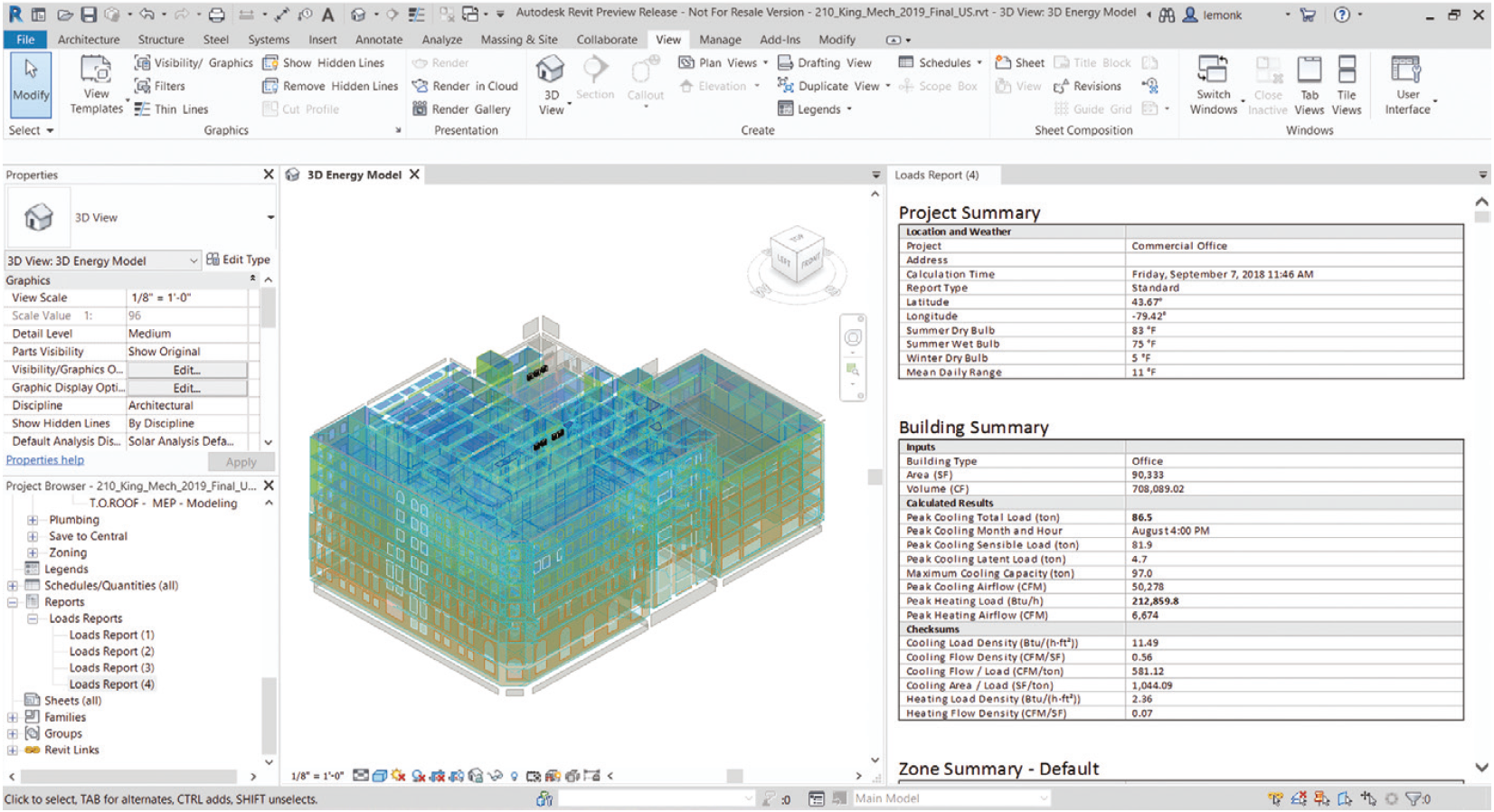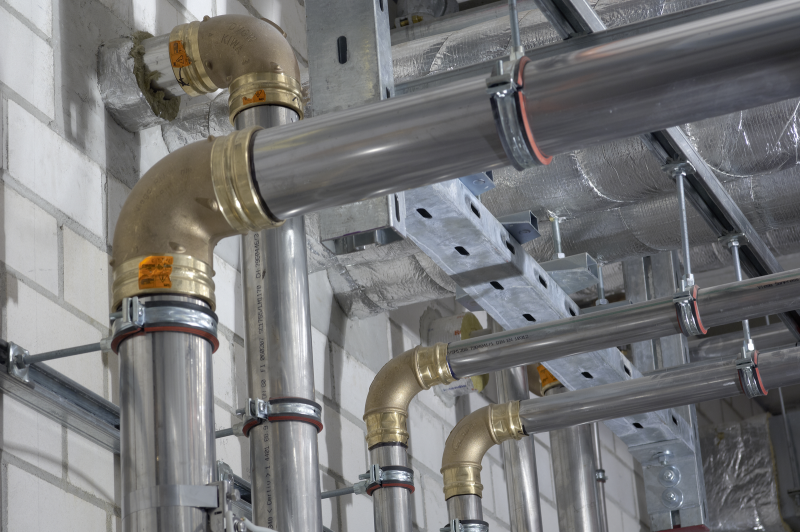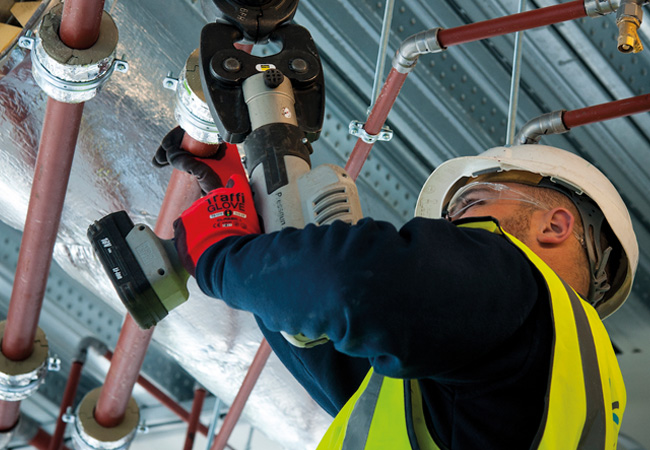
Oversizing of HVAC systems is a £224bn problem globally, according to a joint study by Autodesk and the Rocky Mountain Institute (RMI).1
This found that using traditional static-load and rule-of-thumb approaches to system sizing can result in a 50% oversizing of systems.2 This reduces occupiable space, raises capital and operating costs, and decreases occupant comfort.
Right-sizing is the process of designing systems that can treat occupiable spaces during normal conditions, while allowing a small amount of overrun for exceptionally hot or cold days. This article looks at how integrated building design and dynamic modelling can support this. To succeed, these methods need the right approach and inputs, and an iterative and collaborative process.
HVAC right-sizing will also be crucial to meet the ambitious goal of decarbonising Europe’s building stock by 2050.3 Around 75% of buildings in the EU were built before 1990, and an estimated 97% need an upgrade,4 putting mechanical, electrical and plumbing professionals in a strong position to improve the energy performance of existing and new building stock. For a typical commercial building in the EU, right-sizing could reduce greenhouse gas emissions by as much as 0.44 metric tonnes of CO2-equivalent per year.5
The approach: design-assist and dynamic modelling
BIM has lowered barriers to early-stage energy analysis dramatically. With the design file now providing the basis for analysis from early stages – including concept design – the opportunity for the engineer to engage as a collaborative adviser arises much sooner. By automating aspects of energy simulation, including creation of the analytical model, software has further opened the door for this change in practice.
Insight building performance analysis software gives Revit users a guide to better building energy and environmental performance throughout the building life-cycle. Engineers can use its sensitivity analysis to guide clients and architects to the most desirable energy conservation measures. The software shows how prospective design changes affect heating and cooling loads, and energy use intensity.
Factors affecting right-sizing
- Solar – where and when will solar irradiation affect our building?
- Equipment – what is adding heat to different spaces?
- People – how many people will occupy the space, what will they be doing, and what clothing effects will there be?
- Systems – how much heat is added or removed by the delivery system?
- Contra-loads – is there anything in the space that will do part of the system job for you?
- Local variables – is the heat-island effect significant?
- Variables over time – how will the climate around my building change over time?
Using the model and integrated building performance analysis data eliminates the need to build a separate model for energy analysis. On upload, a range of potential design outcomes are simulated through energy cost-range factors, to help engineers identify key energy performance drivers quickly, and dynamically compare design scenarios.
Interaction with performance indicators, benchmarks, factors, ranges and specifications gives real-time cause-and-effect feedback early in the project. By using the cloud, dynamic modelling can be performed early and often.
Beginning the process in the conceptual design phase and carrying it through the entire design phase allows decisions to be made at the right time, with the right information – potentially minimising loads and optimising equipment selection to achieve better building performance with right-sized designs.
Insight supports a variety of workflows, including whole-building energy and lighting analysis, solar radiation and shading, daylighting, and heating and cooling loads analysis.
Inputs
Any analysis is only as good as the data it is fed. All calculations are subject to the ‘garbage in, garbage out’ principle, so it is important to use relevant data and the correct assumptions. Take the allowance made in cooling systems for the additional heat emitted by the lighting scheme, for example.
Has the luminaire type proposed by the electrical engineer been modelled by the mechanical engineer? It is not uncommon to allow 12W per m2 for the lighting load in the cooling calculation, but if LED lamps are being proposed, this figure will be too high – and the cooling system will be oversized. Decisions like these are more easily captured and iterated using analysis tools.
Similar considerations should be given to the incident solar irradiation according to the building’s orientation. Again, it is not uncommon to provide a general factor, but how true would this be in real-world scenarios? With the ability to parse large quantities of data across many different calculations quickly and easily, we can perform analysis with a higher degree of precision without additional work overhead. This helps us get closer to the ‘right size’ value earlier, and iterations of the design will be smaller, as we start from a better position.
There are numerous factors to consider to ensure right-sizing, including solar gain, occupant behaviour and equipment loads (see panel, ‘Factors affecting right-sizing’). Occupant activity levels, connected plug loads (small power), solar gain, and the effect of overshading from surrounding structures should also be taken into account – as should future weather data, using resources such as CIBSE’s Weather Files. The software gives a platform to model these scenarios quickly.
Model early, revise continuously
Being able to model early with a small amount of information allows key design decisions to be made. These can then be iterated rapidly as more detailed information becomes available. Revit enables the engineer to create systems zones from the architect’s model, and associate plant and equipment, air systems or water loops to serve individual spaces or the whole building. Once analytical spaces have been created, and a system and zoning strategy established, energy analysis, comfort and system sizing can begin.
Using the EnergyPlus2 service and the OpenStudio API, engineers can run a set of predefined scripts for analysis – or customise the open-source scripts provided – to run almost any kind of services-related system analysis. The results are delivered back in Revit, where more detailed design can start.
Insight software gives Revit users a guide to better energy and environmental performance during the building life-cycle
Conclusion
Right-sizing is more easily addressed using technology. We can simulate conditions, analyse results and make more informed decisions – and the process engages the engineer in more BIM-based workflows.
Traditional methods for sizing equipment often result in expensive, underperforming systems that lead to suboptimal duct and pipe-sizing. Integrated design and dynamic modelling enable real data – or accurate estimates tailored to the project – to drive better outcomes, facilitating model-based iteration and collaboration, modelling early and often, and revising continuously, with little or no impact on project schedule.
Overall, the process gives greater return on investment for the client, who can save on capital and operational expenses, gain more leasable area from reduced services, and offer occupants greater comfort. Research suggests that right-sizing can reduce HVAC first and system components costs by as much as 23%. It also offers energy and greenhouse gas savings for existing building infrastructure, reducing overheating of buildings as part of renovation projects.
About the author
Steven Butler is a senior industry strategist for MEP at Autodesk. Michael Floyd is an AEC sustainability strategy manager at Autodesk
References:
1 140Mtoe – total commercial buildings energy in EU28 (EU Buildings Database, 2011-2015); 1toe = 11629 kWh; 296 x 10-6 tonnes CO2e.kWh-1 (EU database, 2016 CO2 emission intensity); HVAC is 40% of building energy (Navigant Research); Average savings of 3.5% from proper HVAC sizing; 15.364 million commercial buildings in EU (EU Buildings Database, 2011-2015); (140 x 106)toe x 11629 kWh.toe-1 x (296 x 10-6) t CO2e.kWh-1 x 40% x 3.5% x (1/15.364*106) = 0.439 tonnes CO2e per average building
2 Mowris, R and Jones, E, Peak demand and energy savings from properly sized and matched air conditioners, 2008 ACEEE Summer Study on Energy Efficiency in Buildings
3 As laid out in the Energy Performance of Buildings Regulations in England and Wales, the Climate Change Act, the EU’s Energy Performance of Buildings Directive (EPBD) and the Energy Efficiency Directive
4 Factsheet on upgrading buildings, Buildings Performance Institute Europe,
5 Estimate based on total commercial buildings energy in EU28 of 140Mtoe (EU Buildings Database, 2011-2015), 3.968*10^7Btu/toe, 341.







